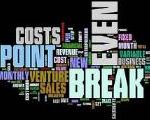 There is only one group of people that I’ve met who are more passionate, dedicated, and persevering than entrepreneurs: social entrepreneurs.
There is only one group of people that I’ve met who are more passionate, dedicated, and persevering than entrepreneurs: social entrepreneurs.
When you add solving a major societal problem to an already driven entrepreneur, it becomes even easier for the entrepreneur to allow the business to be all-consuming. Yet this “all-consumption†can often cause social entrepreneurs to put on blinders and neglect an essential element of building a successful, socially-minded enterprise—finance.
Far too many social ideas and companies fail to become sustainable because their leaders shun the financial part of the business, as if allowing finance and profitability to become part of the decision-making process will taint the purity of their cause.
Rather than attempt to completely change this mindset in one article, I suggest social entrepreneurs start by understanding the concept of break-even and how it can empower them and their organizations to have even more influence for good.
How to Break-Even
In its simplest form, break-even is the point at which the amount of money coming into the business is exactly equal to the money going out of the business within a specific period of time. Here is how you calculate it and why it is so important.
Variable Costs
First you need to separate all of the expenses and cash outflows of the business into two categories, fixed and variable.
Variable costs fluctuate with your sales. For example, if you are manufacturing and distributing clean water in a third-world country, how much does each incremental bottle of water cost? This is usually defined as a percentage of the sales price for the bottle of water. If each bottle sells for $0.25, and it costs you $0.10 in materials, labor, and other direct costs to make and sell it, then your variable costs are 40 percent ($0.10 divided by $0.25).
Contribution Margin and Fixed Costs
If 40 percent of your sales pays for your variable costs, that means 60 percent, also known as your contribution margin, of your sales is left over to cover your fixed costs.
Your next step to understanding break-even is to add up all of your monthly fixed expenses. It is critical that social entrepreneurs add in their monthly “nut,†or the amount they need to pay their bills and survive personally. If the social enterprise cannot keep the entrepreneur alive, then it is destined to fail.
Fixed costs include fixed wages and salaries, taxes, rent, marketing, and more. Contrary to conventional fixed costs calculations, I also recommend you add in all debt payments to make sure you include all of the outflows and expenses that do not change, regardless of sales volume.
To continue our example, let’s assume your fixed costs are $10,000 per month. By dividing your fixed costs by the contribution margin, this tells us we need to sell $16,667 of water bottles per month to break-even ($10,000 divided by 60% = $16,667). At a sales price of $0.25, you will need to sell almost 67,000 bottles of water per month to break-even.
The Daily Number
I always prefer to simplify break-even into a daily number, so that it is very easy to determine success or failure each day.
If you are manufacturing and selling 25 days per month, this means you need to sell almost 2,700 water bottles per day. This number may seem overwhelming, or it may seem entirely reasonable. Either way, just knowing the number helps you understand what it will take to build a sustainable social business.
Finally, let’s clarify one point. Running a company at break-even is not a sustainable proposition. A business needs to make some profit so that it can reinvest in improving itself. I would urge all social entrepreneurs to never set their goals merely at break-even. Yes, it really is okay for a social enterprise to make money. In fact, that’s how it can ultimately create and accomplish the most good!
